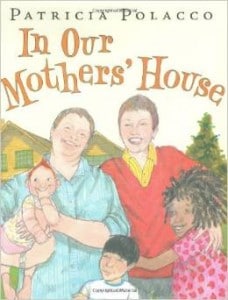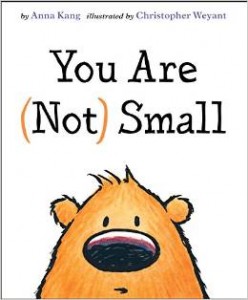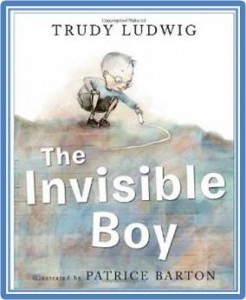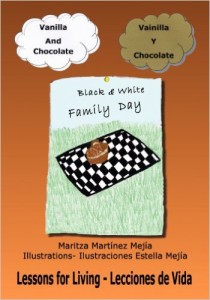 Increasingly, adoptive families have come to understand the importance of talking about race, of awakening ourselves to the subtleties of white privilege, microagressions and how color blindness is a misguided solution to racism. Chocolate & Vanilla, illustrated by Estella Mejia and written by Maritza Mejia, explores racism for readers ages 5-8. A teacher, Mrs. M, notices that Vanilla and Chocolate, two former friends no longer play with each other. She learns this is because Vanilla’s parents did not approve of their son’s interracial friendship.
Increasingly, adoptive families have come to understand the importance of talking about race, of awakening ourselves to the subtleties of white privilege, microagressions and how color blindness is a misguided solution to racism. Chocolate & Vanilla, illustrated by Estella Mejia and written by Maritza Mejia, explores racism for readers ages 5-8. A teacher, Mrs. M, notices that Vanilla and Chocolate, two former friends no longer play with each other. She learns this is because Vanilla’s parents did not approve of their son’s interracial friendship.
To combat this problem the teacher organizes, “Black and White Day,” a special parent-child activity day at the park. Families bring traditional foods which they share. Watching their children play peacefully together, hearts and minds open. They come to understand that a friend is a friend whether they are the same race or not.
Because Mejia’s simple story unfolds in both English and Spanish, it also serves double duty as a way to assist readers of either language improve their non-native vocabulary. Four stars
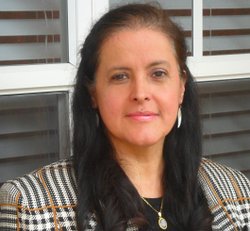
 Maritza Martinez Mejia a bilingual substitute teacher born in Colombia lives in Florida with her husband and their two teenagers. For her active participation and service to the community, she is the recipient of the “Crystal Apple Award 2006.”
Maritza Martinez Mejia a bilingual substitute teacher born in Colombia lives in Florida with her husband and their two teenagers. For her active participation and service to the community, she is the recipient of the “Crystal Apple Award 2006.”
Maritza published her memoir “Hazel Eyes” (2010), “Vanilla and Chocolate” (2012), “Grandma’s Treasure” (2014), and “Poems, Thoughts and More” (2015). She won the FAU Treasure Coast Poetry Contest Spring 2010 and Virtue Christian Book Awards for Best Poetry 2015. Both Bilingual Children Books received a FIVE Stars Seal Review by Reader’s Favorite.
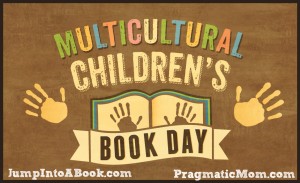
Multicultural Children’s Book Day has 12 amazing Co-Hosts. View them here.

The Mission of Multicultural Children’s Book Day is: to spread the word and raise awareness about the importance of diversity in children’s literature. Our young readers need to see themselves within the pages of a book and experience other cultures, languages, traditions and religions within the pages of a book. We encourage readers, parents, teachers, caregivers and librarians to follow along the fun book reviews, author visits, event details, a multicultural children’s book linky and via our hashtag (#ReadYourWorld) on Twitter and other social media.
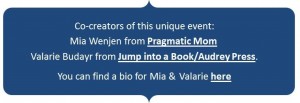
Multicultural Children’s Book Day 2016 Medallion Level Sponsors!
Platinum: Wisdom Tales Press, Story Quest Books, Lil Libros
Gold: Author Tori Nighthawk, Candlewick Press Bharat Press
Silver: Lee and Low Books, Chronicle Books, Capstone Young Readers New York Media Works,LLC/KidLit TV
Bronze: Pomelo Books, Author Jacqueline Woodson, Papa Lemon Books,
Goosebottom Books, Author Gleeson Rebello, Shout Mouse Press,
Author Mahvash Shahegh, China Institute.org, Live Oak Media
Multicultural Children’s Book Day has 12 amazing Co-hosts and you can view them here.
Teachers, we invite you to spread the word to your teacher/librarian/classroom connections so; get them involved in this program. There is no cost to teachers and classrooms. You can help by tweeting the below info:
Teachers! Earn a FREE  #Multicultural Kids Book for Your Classroom!
#Multicultural Kids Book for Your Classroom!
#teachers, #books #teacherlife http://ow.ly/UUy96
The Classroom Reading Challenge has begun! Teachers can earn a free #Diversity  book! #teachers, #books http://multiculturalchildrensbookday.com/?p=1796
book! #teachers, #books http://multiculturalchildrensbookday.com/?p=1796
Classroom Reading Challenge:Help spread the word on our Classroom Reading Challenge . This very special offering from MCCBD offers teachers and classrooms the chance to (very easily) earn a free hardcover multicultural children’s book for their classroom library. These books are not only donated by the Junior Library Guild, but they are pre-screened and approved by them as well.
Multicultural Children’s Book Day Classroom Reading Challenge-
Get a FREE Diversity Book for Your Classroom Library!

Teachers! We want to help you build your classroom library with diverse, inclusive and multicultural books! Here’s how to get a free book through Multicultural Children’s Book Day on January 27th. You can also win a Skype author visit with a children’s book author! We will draw a winner from the teachers who signed up. This year the Skype author visit is with (to be announced).
LATEST EXCITING UPDATE! Junior Library Guild has agreed to sponsor this portion of the MCCBD 2016 event and donate up to 200 books for classrooms and teachers!

The Classroom Reading Challenge is a new project for us but it is a way for teachers to sign up, read up to four multicultural books in their classroom and earn a free multicultural book from us. Having Junior Library Guild on board assures that the free book classrooms earn from MCCBD is a pre-screened, library-quality book that maps to Common Core. This is a HUGE and exciting benefit for this project.
Multicultural Children’s Book Day: Diversity Classroom Reading Challenge for Teachers
Step 1: TEACHERS sign up your classroom here.
Step 2:Read books! (Diversity picture book list for 4th grade, 5th grade, 6th grade, 7th grade, 8th grade tied to Core Curriculum.) No quota. No catch. Just read 
We will send you a diverse title FOR FREE!!
Want to win more diversity books?
Get your students involved in our reading competition! Have your students submit the books they read during the month of January.
We will hold raffles of book packages for everyone who submits. PLUS we will award book packages to the top 10 classrooms. Click HERE for a printable PDF of the above information
Teacher Sign Up is below:
Thank you so much for your support!
For questions or concerns, email MCCBD Project Manager, Becky Flansburg at Becky@AudreyPress.com
Introducing our Author Sponsors for MCCBD 2016!
Lisa Yee, Joseph Bruchac, Jacqueline Jules, Valerie Tripp, Debbie Dadey, Todd DeBonis, María de Lourdes Victoria, Sherrill Cannon, Pack-n-Go Girls®, D.G. Driver, Janet Balletta, J. J. Parsons, Charlotte Riggle, Miranda Paul, Leza Lowitz, Ann Berlak, Marti Dumas, Carl Gundestrup, Carole P. Roman, Cathleen Burnham, Heidi Smith Hyde, Greg Ransom, Keila Dawson, Stephanie Workman, Gloria D. Gonsalves, Stephen Hodges, Quentin Holmes, Jeaninne Escallier Kato, Karl Beckstrand, Francesca Fost, P.J. LaRue, Francesca Forrest, Diana Lee Santamaria, Terrie Hoops, Cerece Rennie Murphy, Z. Altug, Holiday House Publishing, Maria Dismondy, Michael Smith, Icy Smith, Aphrodyi Antoine, Elsa Takaoka, Erik Niel, Marimba Books, Karen Leggett Abouraya, Shout Mouse Press, KaneMiller EDC Publishing, Shweta Aggarwal, Durga Yael Bernhard, LorRonCo, Heather Goetz, Dania Ramos Daryl OConnell, Zetta Elliot,Effie Hill,Firoozeh Dumas ,DuEwa Frazier, Ben Woodard,Susan Ross, Sandra L. Richards, Dania Santana, Author Kala Sambasivan, Elizabeth Atkinson, Houghton Mifflin Harcourt for Young Readers, Scavenger Hunt Adventures, Year of the Cat Books,Sarah J. Stevenson,Gayle H. Swift, Patrick Hill, Bruce Hale,


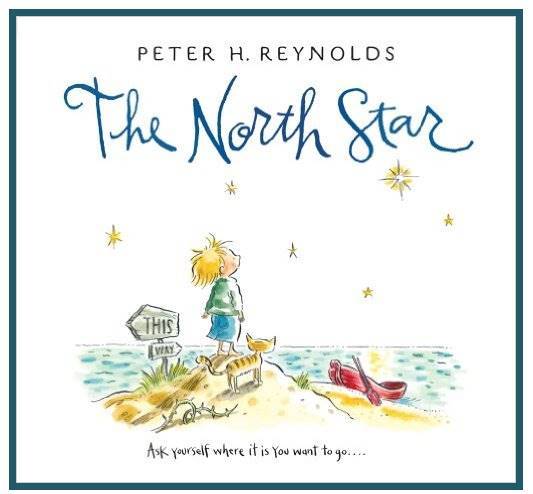 The North Star written and illustrated by Peter Reynolds, is a gem of a book that explores the notion of a guiding purpose, a compass to follow throughout our lives. As the boy travels through life, he recognizes that he is on a journey. He comes to understand that everyone must follow the inner knowing of one’s heart to carve out a life.
The North Star written and illustrated by Peter Reynolds, is a gem of a book that explores the notion of a guiding purpose, a compass to follow throughout our lives. As the boy travels through life, he recognizes that he is on a journey. He comes to understand that everyone must follow the inner knowing of one’s heart to carve out a life.![]()
![]()
![]()
![]()
![]()

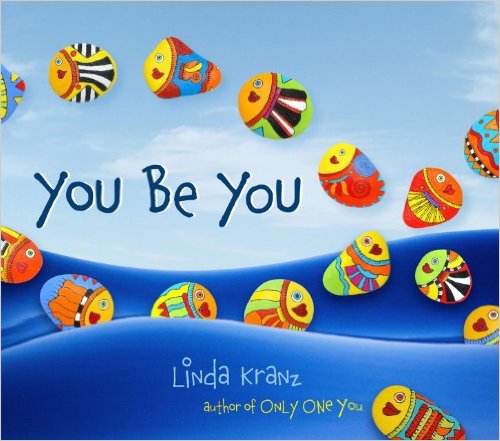
![]()
![]()
![]()
![]()
![]()




 A slender and wiggly thread divides contrariness from being true to oneself. As our kids learn to discern the difference, we parents must deal with the confusion, frustration and—Dare we say it?—the irritation. Teaching our kids how to think for themselves, choose well and not follow the crowd takes patience and practice.
A slender and wiggly thread divides contrariness from being true to oneself. As our kids learn to discern the difference, we parents must deal with the confusion, frustration and—Dare we say it?—the irritation. Teaching our kids how to think for themselves, choose well and not follow the crowd takes patience and practice.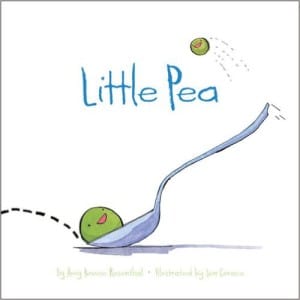
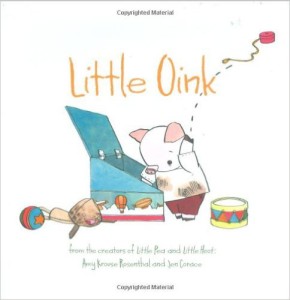 Amy Krouse Rosenthal reprises a similar premise in
Amy Krouse Rosenthal reprises a similar premise in 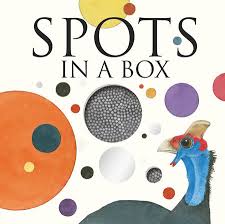

 Increasingly, adoptive families have come to understand the importance of talking about race, of awakening ourselves to the subtleties of white privilege, microagressions and how color blindness is a misguided solution to racism.
Increasingly, adoptive families have come to understand the importance of talking about race, of awakening ourselves to the subtleties of white privilege, microagressions and how color blindness is a misguided solution to racism. 







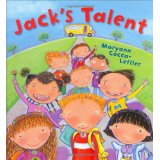
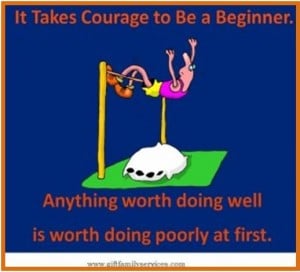
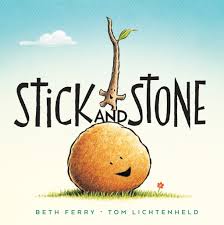

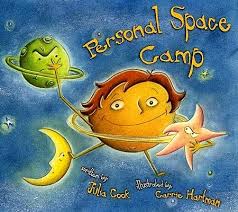 One excellent resource is a marvelous book by Julia Cook titled,
One excellent resource is a marvelous book by Julia Cook titled, 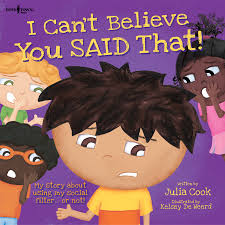 Julia Cook has written several other books that delve into the confusing world of social cues and interaction. One that is also quite helpful is,
Julia Cook has written several other books that delve into the confusing world of social cues and interaction. One that is also quite helpful is, 